|
What can be learned from painting a still life besides the fact that it makes a good subject and has inspired artists throughout the centuries? First and foremost we are studying FORM. The shading on the Egg, the Sphere, the Cube and the Cylinder are all forms of which the professional artist has an intimate knowledge. We study the way light falls across these forms in revealing their essential elements.So the two most important questions we must ask ourselves are: WHERE IS THE LIGHT COMING FROM? and WHAT IS THE FORM WE'RE DRAWING or PAINTING? ( Of course the light source must come from one direction.) These 'essential elements' are THE FIVE PLANES OF LIGHT; Light, Shadow, Half-tone, Reflected Light and Highlight.
We're learning to "see" as we study the concepts and principles of art. From painting the still life we're also studying the qualities of various textures including glass, silver, copper, porcelein ,various materials (cotton, velvet, satin),fruit, flowers and more. At the same time we're learning techniques and how to apply paint; transparencies vs opacities and COLOR. We study the nuances of mixing colors; cool blues and warm blues ;cool reds and warm reds; cool yellows and warm yellows and so on. WE study VALUES ( lights, middle tones and darks). To simplify , this is what we study and learn from the still life:
So painting and understanding the still life makes the portrait better as well as the landscape.
2 Comments
This is a short follow-up to a previous blog dealing with the concepts of Classical Realism VS those of Academic Realism. I keep stressing these differences because artists and art students today are drawing and painting academic realism and calling it classical realism which it is not. I've chosen two well known artists to make my point . We'll just look at some drawings here, and paintings at a later date. This is a quest of mine which I teach in my classes . CLASSICAL REALISM , as I mentioned previously , comes from the ancient Greek art of The Golden Age in the 5th century BC; this was the age of Pericles and Phidias . The concepts of proportion , form , gesture , anatomy , composition , technique and beauty originated at that time. It was rediscovered and had its rebirth during the Renaissance with Leonardo, Raphael and Michelangelo as well as others . These concepts continued through the 17th century in the work of Rubens , Velasquez , Van Dyke and many other great artists . Let's look at Rubens first. In these three drawings , we see how Rubens is thinking of the motion or action of the figure , the techniques he uses are based on KNOWLEDGE of the figure . He understands , for example , that the largest form of the body is the ribcage . He KNOWS that this form is an egg shape; he KNOWS how the light and shadow fall upon that egg shape as a single light source powerfully illuminates it .The forms of the head , the arms ,legs and so forth are depicted in the largest sense . He is NOT COPYING his subject. His subject is INSPIRING the art . Note , too , that since he KNOWS and UNDERSTANDS the FIVE PLANES OF LIGHT on each egg shape, spherical shape , cube and cylinder , he has created figures of tremendous solidity and power . Once again , he does NOT COPY nature . Now let's look at a couple of Bougereau drawings. Bougereau does a precise ACADEMIC rendering of the figure. Can you see the difference from a great Classical Master ( Rubens ) and the 19th century COPY approach? Which has the excitement of a life force and which is dull and boring? Bougereau was one of the very best 19th century figure painters. He understood anatomy inside out ; proportion and form. His forms are flattened out , however . He lacks the REFLECTED LIGHT plane in these drawings. He's more interested in an outline of the figure as he fills in the shading. Bougereau succumbed to the competition of photography. It appears that he relied on COPYING too much as Gerome, Alma Taddema , Frederic Leighton and many other 19th century artists.This was the death of great art in the tradition of the Classics. A glimpse of art history tells us that this boring , dull academic art gave rise to Impressionism and later to all the bizarre " art" and artists of the 20th century .
There is an increased interest among art students in Realism . Most do not know the difference between Classical Realism and Academic Realism . I'm going to discuss these differences in this blog with examples . First of all, what do we mean by Classical Realism? The ancient Greeks lead the way in exhibiting the principles , concepts , proportions and so forth . The Parthenon , constructed in the age of Phidias and Pythagoras , is considered Classical art at its zenith . Not only the architecture , but the figurative sculptures define the essence of Classical Art. The Romans adhered to these same principles in the creation of their own architecture , sculpture and painting . Later, the Renaissance became a period of rebirth of these same Classical qualities. So , what are they? An art with Nature as its inspiration is first and foremost . The human figure , in particular , was considered the highest form of art . The form , the structure , the proportions , the gestures , the treatment and thorough understanding of human anatomy and composition or design were all attributes of the art. The first picture shows the Laocoon Sculpture , the second is The Venus De Milo and the third shows the Caryatid scuptures from a temple near the Parthenon in Greece. These are examples of Greek art at its height. The movement , the emphasis on Form , the canon of Proportions of the figures are all qualities of Classical Realism . Note the graceful contraposto of the pose of Venus. Her right shoulder tips down as the right side of her pelvis is raised . Her head is turned towards the raised shoulder. This is Classic. The anatomy is subtle in its modeling and reveals only the most essential as well as the largest forms . The Laocoon has a violent , sweeping gesture as the ribcage is turned on the pelvis .The feeling of a ' life force' is apparent when studying these figures closely . Let's look at some drawings form the Renaissance ( Classical Realism ) and compare them to 19th century art ( Academic Realism )  Raphael Raphael  Michelangelo late 19th century drawing Jean- Auguste-Dominique Ingres 19th century late 19th century figure drawing Peter Paul Rubens 17th century As we study the drawings of Raphael, Michelangelo and Rubens , all of which exhibit the classical principles of drawing and compare them to the academic realism of the late 19th century , we see some marked differences. The knowledge and understanding of the classical concepts of the large forms , structure , anatomy , technique , action as well as the ' life ' of each piece is in direct contrast to the dull , filled-in drawings of the 19th century which also lack the large forms , knowledge of anatomy and unfortunately , rely on the influence of the photographic image. In other words , the artist with a classical point of view , is inspired by and interprets the model before him or her while the academic realist is influenced by and emulates the photographic image. Let's now take a brief look at some paintings devoted to classical concepts and those which are 19th century academic works. Rembrandt Van Dyke Velasquez Ingres Sir Frederic Leighten Sir Frederic Leighten With this small sampling of paintings we can once again compare the characteristics of the classical approach shown in the work of Rembrandt, Van Dyke and Velasquez with the dull , flat work of 19th century artists represented by the work of Frederic Lord Leighten and Ingres . Note the flatness of the materials and the form of the figure in the work of Ingres as compared to Van Dyke. Rembrandt is famous for his treatment of LIGHT .This was also a quality of the work of Velasquez and all of the artists of the Renaissance , the 17th century and the beginning of the 19th century . ( before the introduction of the photographic image and influence ).
The nude , backview is another example of a flat , filled-in figure ; Dull and uninteresting . The large concepts of SPACE , LIGHT and ATMOSPHERE are present in Classical Painting and Drawing and are lacking in Academic Realism . There are academies and ateliers in Italy , the US and many other places that claim to be practioners of Classical Realism. They are actually perpetuating more of the dull 19th century Academic Realism . There are many talented artists but they don't have the training in the true Classical concepts. In my own classes , I espouse and teach Classical Realism . Look over my various pages of ' critiques ' and workshops . ( group and private ) and videos , e-books and more . I discuss the concepts of Classical Realism in my book , MASTERING OIL PAINTING. This has been only a brief blog regarding this topic but I hope I have provoked some thought. . Understanding the concept of the LIGHT EFFECT is essential to artists interested in Classical Painting . This is also what's MISSING in most artists' work , whether it's realism , photo realism or academic realism. The concepts of Space , LIGHT and Atmosphere must all come together in a work of art in order for it to resonate with the viewer and hopefully leave them inspired with the beauty and grandeur of Nature . These concepts apply to the portrait, the classical still life , the floral painting and the figure. We will concentrate on the landscape here and discuss the other subjects in future blogs. If you look at the landscapes of Claude Lorrain , J.M.W. Turner , George Inness , Thomas Moran , Albert Bierstadt , Thomas Cole , Edwin Church , Frank Mason ( my instructor ) and all of the Hudson River School of American painters ,you will be captivated by the LIGHT EFFECTS. This means more than just a " focus " or a " spot" of light in the painting's composition . As I mentioned above, it's in combination with the concepts of Space and Atmosphere. This is difficult to explain but more readily understood when the artist faces the landscape and paints en plein air as he/ she relates to the ever-changing light effects of Nature.( I demonstrate and discuss all of this in my workshops ) Leonardo , in his notebooks , even talks about aerial perspective and how to achieve atmospheric effects as objects recede and become cooler and lighter in value. Light moves in and through the landscape . The artist must always keep in mind where the source of light is in the sky. This will dictate where it strikes the ground and where the effects of Light will be greatest . Too many contemporary realists merely copy the values that they see before them . The true artist paints not only what he or she sees , but what they KNOW. I go into depth with this subject ( as well as the classical still life , floral and portrait ) in my book, MASTERING OIL PAINTING . I demonstrate these concepts of Space, LIGHT and Atmosphere in my DVD of 'Landscape Painting on Location ' also .( both available in my shop ) . Sign up for one of my workshops and learn from observing and painting on location! 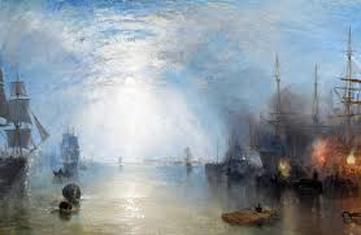 J M W Turner J m w turnergeorge innessthomas moranfrank masonJames sulkowskijames sulkowskijames sulkowskiMany students of art are interested in the colors used in mixing flesh-tones when painting a portrait.
There are some principles to follow that can simplify the issue. Everything that we paint is red, yellow or blue. Red doesn't always mean a bright cadmium red and yellow doesn't always mean cadmium yellow and blue isn't necessarily any of the blues on the palette. What this means is that red might be terra rosa ( an earth red ); yellow might mean yellow ochre and blue might be gray instead. So, as a starter, artists must study their model's complexion. How red is it; is it more of a yellow complexion and how cool is it( blue )? A basic flesh-tone can be made by mixing cadmium red light or vermilion + yellow ochre + a middle gray.( gray is made with ivory black + white ). The gray controls the intensity of the mixture of the red and yellow ochre.. By a middle gray, I mean between light and dark . More red in this mixture will give a ruddier complexion , more yellow ochre will create a softer , more balanced flesh-tone. People who have a fair complexion require a different red and a different yellow and I would suggest a warmer gray. So these would be cadmium yellow medium + alizarin crimson + gray ( made with raw umber + white ). As you build the light on the head , you'll need mixtures ( in the first case ) of cadmium red light ( or Vermilion ) + yellow ochre + white . In the second case , of the fair complexion make a mixture of cadmium yellow medium + alizarin crimson + white to build the lights on the head. The shadow in each of these cases is the same; a mixture of cadmium red light + cobalt blue . There is more red than blue in this mixture. ( it's a warm violet ). This is a brief synopsis of colors used in mixing flesh-tones. More information can be found in my free downloadable video as well as my DVD on portrait painting. Click on my Shop for the details. http://www.jamessulkowskifineart.com/store/p33/No_Nonsense_Realism%3A_The_Portrait_.html There are TWO extremely important lines that Classical Artists are aware of when constructing the human head . These are the CENTER LINE and THE BROW LINE ( that is , eyebrow line ). These two lines show DIRECTION ; whether the head is looking left, right , up , down and so forth. Let's look at some examples: Leonardo DaVinci , Velasquez and Titian .
Leonardo Da Vinci , Michelangelo and Vermeer and the 17th century Masters  have been the subjects of blockbuster news in recent times. A LEONARDO portrait of Jesus set an auction record of 450 million dollars ; an exhibition of MICHELANGELO'S drawings at the Metropolitan Museum of Art in New York brought record-breaking crowds ( this has been called the number one art event of 2017-2018 ) ; another major exhibition recently closed at The National Gallery of Art in Washington D C entitled VERMEER and the MASTERS OF GENRE PAINTING. ( also in the top three of major art shows of 2017-18 ) All of these artists are Masters of drawing and painting . What makes them Masters? Their art is based on Nature ; the depiction of the human form was considered to be the highest achievement of art from the age of Phidias in Classical Greece which later enjoyed a rebirth during the Renaissance and continued through the 17th century . Beauty , another important quality of Classical Art and a word banished from the art scene even today , was extremely important then. STANDARDS in the Craft as well as in the creation of drawings, paintings and sculptures existed for centuries . A rigorous study of Form , Light , Composition , Color , Anatomy and so forth was required of the art student . If they weren't capable of understanding and applying these principles ( as they were also learning to " see " ) , then they were advised to do something else with their lives. As I mentioned above, the study of the CRAFT of painting was just as important as the ART. Craft meant knowing how to prepare panels and canvases ( choosing the best quality materials ), grinding pigments with oils prepared by hand , making paint brushes , making varnishes from scratch , making their own charcoal to draw with as well as digging the finest earth deposits for their drawing tools and paints. They made their own papers as well. So the Classical or TIMELESS approach is why the work of these artists continues to capture our imagination. Their paintings exhibit a richness of color and depth that can only be achieved by these principles and methods . A very small number of artists , including myself, working today embrace these concepts and techniques in creating their own timeless pieces. Below are Leonardo's Salvator Mundi , a Vermeer and a painting by Frans Van Mieris. 1/29/2018 1 Comment UNDERPAINTING AND GLAZING TECHNIQUEMany artists ,art students and collectors are mystified by a painting process used extensively by artists during the Renaissance where a black and white underpainting was done of the subject and color was applied later with thin oil glazes.
Leonardo DaVinci, Titian , Veronese and others would paint their portraits and figures focusing on form and light. They separated these problems from the added discipline of color. The result were paintings of great luminosity , depth and richness of color . Rembrandt , in the 17th century , also liked to build his paintings in the same way . This is a Classical approach which I , personally, teach in my classes and workshops .( I also use other approaches as well which I will discuss in another blog. ) The french word for this technique is grisaille. ( grizz-EYE ). If you go to www.jamessulkowskifineart.com , click on " shop" , you can download my videos on Underpainting as well as on Glazing. I explain in depth as I demonstrate the techniques of underpainting and glazing. I take the " mystery" out of glazing and show you which colors are transparent and how to acheive terrific vibrancy and luminosity. |
AuthorClassical artist,James Sulkowski , in his art studio in Houston,Pa Archives
January 2022
Categories |
Search by typing & pressing enter



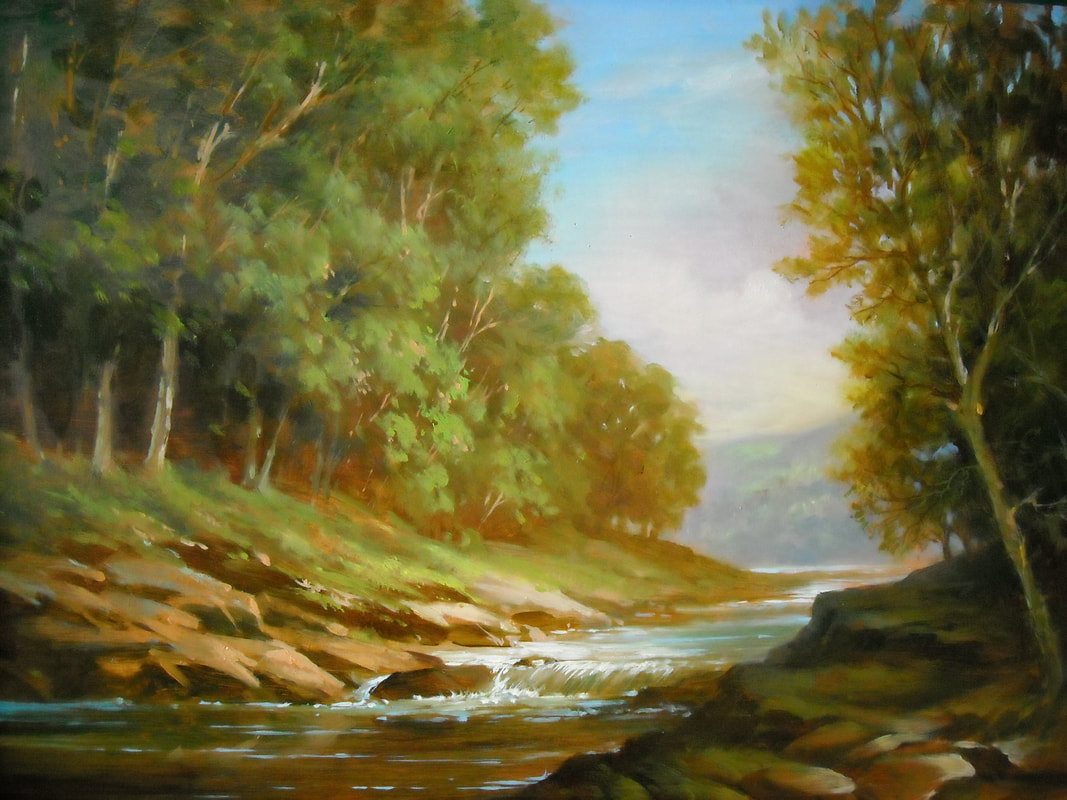







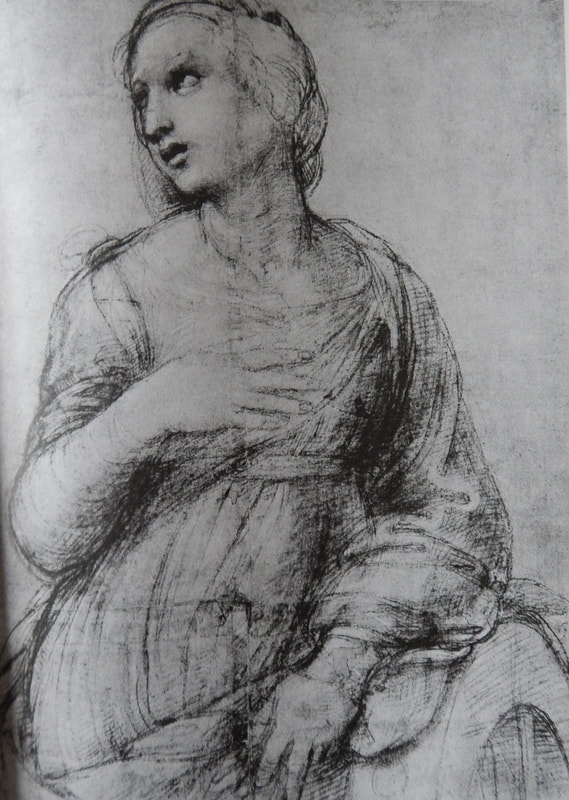








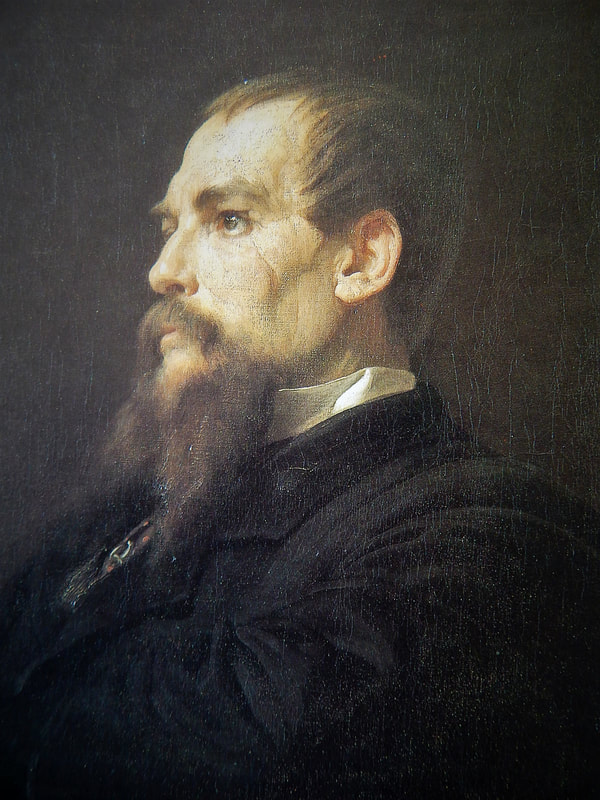








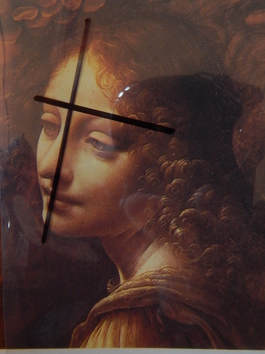







 RSS Feed
RSS Feed